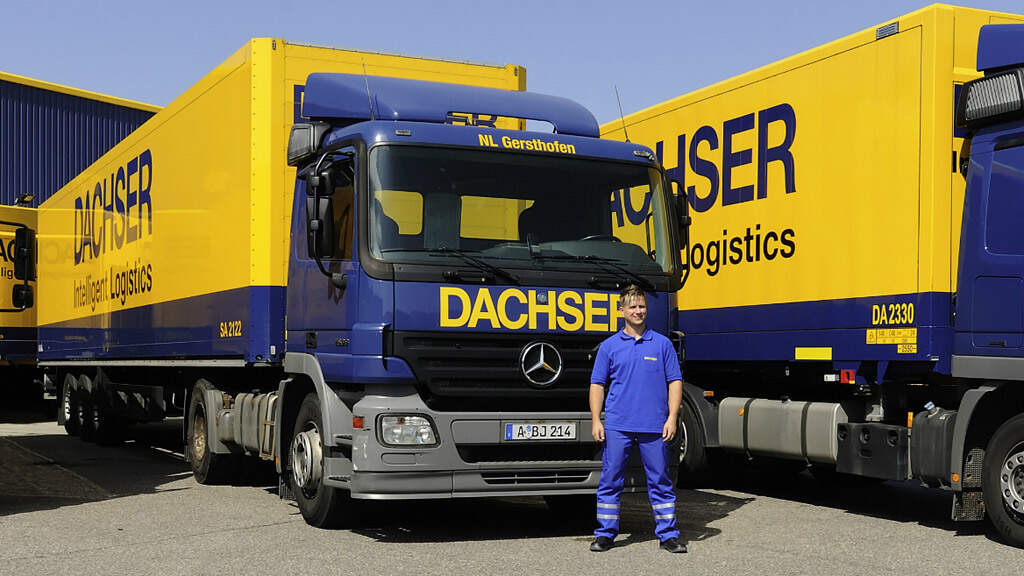DACHSER encourages the driving profession
By forming "DACHSER Service und Ausbildungs GmbH,” the family-owned company is sending a strong signal to counter the lack of drivers. It’s a real hit— with drivers themselves and in the industry.

Procurement and supply chains are becoming increasingly more comprehensive and sophisticated. But what matters in the end is that there are people who bring goods to their destination. For example, professional drivers play a key role in commerce and precisely timed supply chain management. That’s especially the case in the "last mile," where they give logistical services a personal, expert touch and, in the best case, a friendly face.
Given the continued growth in logistics, professional drivers are in demand as never before, and still there are not enough. In Germany alone, the Federal Office for Goods Transport expects that 250,000 drivers will retire over the next ten to 15 years. That's a third of all drivers employed today. In order to head off this trend, companies would have to hire more than 21,000 new drivers a year. In 2012, however, just 1,800 young people finished a training program to become a professional driver.
By forming DACHSER Service und Ausbildungs GmbH, DACHSER has now reacted to the particular demands caused by the lack of skilled labor and has put forward a comprehensive vision for the future. It is based on three essential stages: a qualitative training program in association with independent carriers working for DACHSER. Then comes a professional orientation phase in which the younger generation of drivers gain experience with the carriers. Finally, DACHSER helps them on their way toward independence, or they are permanently hired by the transportation company. In addition to traditional training as a professional driver, 45 new drivers started out based on the new model this past fall. For the start of training this year, another 80 trainees at DACHSER are expected to join in.
Working in extremely realistic conditions
As a wholly owned DACHSER subsidiary, DACHSER Service und Ausbildungs GmbH focuses entirely on recruiting and training drivers. "Qualitatively, we set high standards for the three-year professional training that our trainees undergo," emphasizes Hermann Grünheidt, who manages DACHSER Service und Ausbildungs GmbH along with Hendrik Jansen. "But we didn't reinvent the substance of the training. We only improved and organized it, matching the trainees' needs with ours," explains Grünheidt. "This allows our fleet managers to continuously manage the various interfaces of garage, warehouse, terminal, and driving school."The closely coordinated subject matter has made it possible for us to work in extremely realistic conditions. "In this way, professional driver training at DACHSER from the very beginning establishes qualitative standards even outside the world of DACHSER," emphasizes Jansen.
The key role of the fleet manager
In the branch offices, the fleet managers act as the point of first contact and advisers to beginning drivers and drivers furthering their training. In a departure from the traditional understanding of the term, their role is made up of three elements: Not only do they serve as trainers, organizing all of the interfaces across the process chain of driver in cooperation with the teams, but they also help drivers to become true professionals and later even to become independent. They are responsible for compliance with DACHSER quality and performance requirements and at the same time serve as quality-oriented advisers and liaisons between the drivers and the branch. They take care of all of the operational concerns of the professional drivers and provide training and advice on issues, for instance if a driver wants to become independent after the training.
"This is DACHSER's contribution: to counteract the lack of drivers with good ideas," says Hermann Grünheidt. After all, he continues, the entire industry would be well advised to simplify their interfaces with drivers and to change entrenched structures and processes. "In the end," says Jansen, "this will benefit everyone." That's how the industry can continue to offer a welcoming environment.